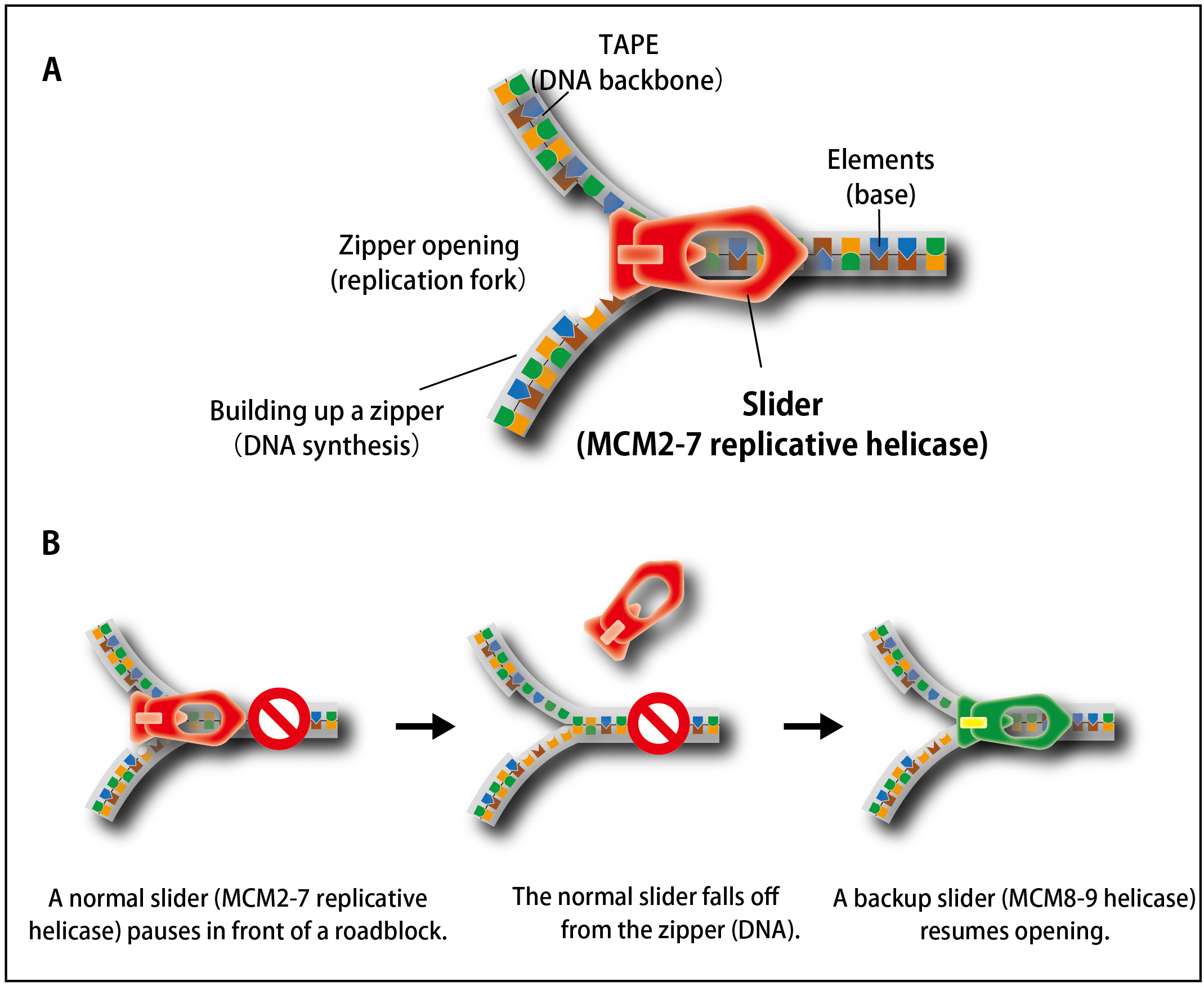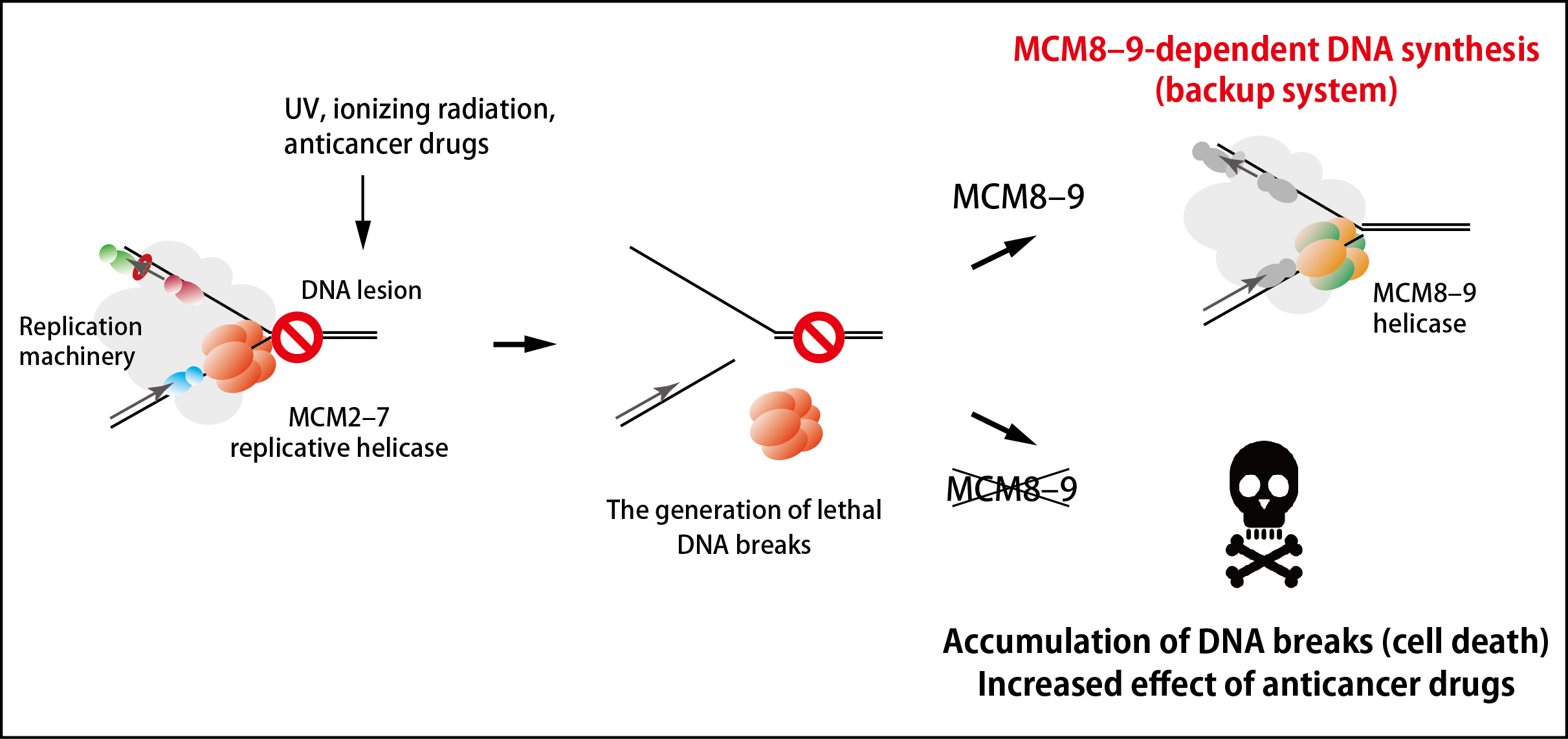How do human cells repair a broken zipper of DNA?
05/11/2017
How do human cells repair a broken zipper of DNA? : A new backup system against failure in DNA replication Acute inactivation of the replicative helicase in human cells triggers MCM8"9-dependent DNA synthesis Toyoaki Natsume, Kohei Nishimura, Sheroy Minocherhomji, Rahul Bhowmick, Ian D. Hickson, Masato T. Kanemaki Genes & Development DOI:10.1101/gad.297663.117 Pressrelease (In Japanese only) Dr. Toyoaki Natsume and Prof. Masato Kanemaki at National Institute of Genetics, ROIS, together with the group led by Prof. Ian D. Hickson at University of Copenhagen, reported a new system to deal with failure in DNA replication. The finding was published in Genes & Development in advance of the print journal. In cell proliferation, genomic DNA has to be precisely copied into two (DNA replication) before equal distribution to two daughter cells. For doing this, double-stranded DNA is unwound, the process of which is similar to open a zipper of your clothes (Figure 1A). Similar to pulling the ‘slider’ for opening a zipper, the replicative helicase known as MCM2�"7 moves on DNA for unwinding double-stranded DNA. However, because human genomic DNA is very long (approx. 2 m per cell), it is challenging to entirely unwind the genomic DNA. Occasionally, the MCM2�"7 helicase falls off from DNA when it encounters a roadblock (such as DNA damage). Because reloading of MCM2�"7 is strictly inhibited during S phase (when cells carry out DNA replication), this might lead to incompletion of DNA replication, which causes the loss of genetic information from daughter cells unless the cells have a mechanism to deal with the problem. In this study, the research groups observed how human cells responded to artificial removal of the MCM2�"7 helicase by using the auxin-inducible degron (AID) technology that they had developed previously (the information about this technology is described here). They revealed that the MCM8�"9 helicase, which is evolutionally related to the MCM2�"7 helicase, promotes a non-canonical DNA synthesis as a backup system after removal of MCM2�"7 (Figure 1B). Many anticancer drugs kills cancer cells by inducing DNA lesions, which enhance removal of MCM2�"7 from DNA during DNA replication. An inhibitor of the MCM8�"9 helicase might enhance the effect of existing anticancer drugs by shutting off this backup system (Figure 2). Figure 1. The process of unwinding double-stranded DNA during DNA replication is similar to that of opening a zipper of your clothes.
(A) Similar to the slider that opens a zipper, the MCM2�"7 replicative helicase opens double-stranded DNA in cells.(B) When the replicative MCM2�"7 helicase (a normal slider) encounters to a roadblock, it occasionally falls off from DNA. To continue DNA synthesis, cells recruit the MCM8�"9 helicase as a backup slider. Figure 2. An MCM8�"9-dependent backup system against failure in DNA replication.
The MCM2�"7 replicative helicase falls off when encountered to a roadblock on DNA, leading to generation of DNA breaks. In this study, the research groups found that the MCM8�"9 helicase continues DNA synthesis on behalf of the MCM2�"7 (top right). If MCM8�"9 does not work, the accumulation of DNA breaks results in cell death (bottom right).
|  Cold Spring Harbor Laboratory Press Bookstore
Cold Spring Harbor Laboratory Press Bookstore


